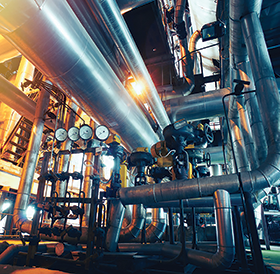

Cylinders can fail for a number of reasons, from wrong specifications to operator error. However, despite the number of engineering tools available to help reduce specification errors, one of the leading causes of cylinder failure is still seals. Whether the seals are sized wrong, incorrect material is specified, or just installed wrong, error in sealing can have a major effect on the entire cylinder operation.
Cylinder operation requires precise fluid pressure on both sides of the piston. If a seal breaks down and allows fluid to leak from one side of the piston to the other or out of the cylinder altogether, the pressures change and the cylinder will no longer operate as intended. Seal issues tend to fall into three main categories: hardening, bad installation and erosion.
Hardening
A seal can solidify and dry out, making it hard and brittle. The most common reason for this is exposure to temperatures that are too high for the seal to handle. This is not just ambient temperature around the cylinder. The piston itself can generate substantial heat through motion and friction, causing wear to the seal. This heat can be monitored by measuring the temperature of the hydraulic fluid entering and exiting the cylinder. There are several methods to combat hardening, including insulation and cooling, but the best way is to use materials that are suited to the temperature requirements of the application. Parker offers a number of high temperature class seals to meet these heat requirements.
Bad installation
It takes precise installation of several parts to ensure that a cylinder will operate correctly for its entire life cycle. The seals are an integral part of this and if they are misaligned hydraulic fluid can leak past the seals. This can cause problems in cylinder operation leading to major failures, resulting in costly downtime. Parker provides cylinders with the proper seals properly installed, as well as universal seal kits to help ensure ease of installation on replacements.
Erosion
Erosion arises from three main sources. One cause is the general wear from the normal back and forth motion of the cylinder. Parker’s Engineered Materials Group develops and manufactures innovative sealing solutions to meet the challenges of today’s rapidly changing industries and provides a wide range of specialty elastomers to satisfy unique sealing requirements.
Another source of erosion is pressure buildup, which can cause wear if the seal used in a cylinder is not specified to the appropriate pressure. Recently, Parker cylinder engineers identified an issue of a piston seal getting blow-by and causing the cylinder to drift in an hydraulic press application. They were able to identify that the seal thickness was varied from about 0,8 mm under to almost 16 mm underprint dimensions and that there was a slight amount of extrusion on the side of the seal facing towards the cap end of the cylinder. These indicated higher pressure on the rod end of the cylinder that was getting trapped underneath the seal and pushing it against the cylinder body, causing wear. Parker recommended switching from the KP piston seal to the HP that is made of polyurethane, a tougher material, with reliefs moulded into the sides of the seal to allow venting excess pressure underneath. This helped the customer identify an issue early that could have grown into a much bigger problem.
The Parker HP energised bi-directional piston seal improves upon the low friction and long wear of lip seals by including excellent low pressure sealing performance. Specially formulated polyurethane is long-wearing and abrasion-resistant with running friction comparable to lip seals. An O-ring energiser ensures virtually zero leakage in low pressure applications. Parker’s HP piston seal is an excellent choice for most industrial applications operating with mineral-based hydraulic oil and is available in Seal Classes 1 and 4.
The Parker KP bronze-filled PTFE seal ring material has low running friction for accurate positioning in closed loop servo applications. When combined with a fluorocarbon energising ring, the Parker KP seal is rated for 200°C and will increase service intervals in high temperature applications when compared to fluorocarbon lip seals.
The final main source of erosion is use with an incompatible fluid. Hydraulic systems use a relatively incompressible fluid and given the application environment, different types of hydraulic fluids may be required. For example, the use of synthetic hydraulic fluid may be used for highly flammable applications. Not every seal will work with every application. Parker offers seven classes of seals that are designed to work with standard hydraulic fluids through to some that are highly corrosive.
| Tel: | +27 11 961 0700 |
| Fax: | +27 11 392 7213 |
| Email: | [email protected] |
| www: | www.parker.com/za |
| Articles: | More information and articles about Parker Hannifin - Sales Company South Africa |

© Technews Publishing (Pty) Ltd | All Rights Reserved